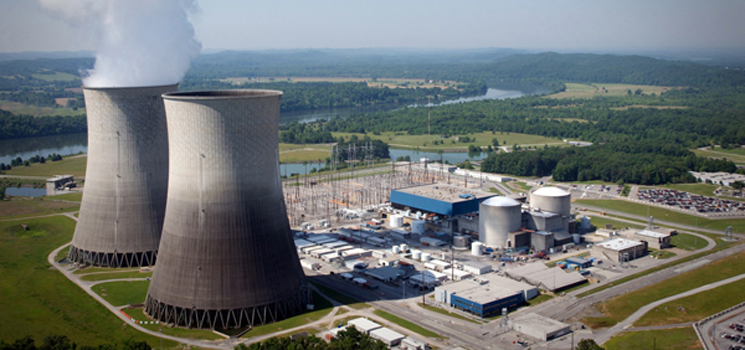Nuclear power is facing serious challenges from cheap renewable energy sources. In 2017, existing construction projects fell further behind schedule while their costs continued to rise. Some major projects were abandoned. Political support and investor interest have been falling across the world. On the other hand, wind and solar power have been falling in costs and rapidly expanding across the world.
There are also new technological treads that threaten nuclear power. The development of huge arrays of batteries are helping to answer the problem of maintaining steady baseload power as solar and wind fluctuate. Also, excess power is being used to produce hydrogen gas which could partially replace natural gas as a fuel for both vehicles and power plants.
The speed with which renewables are being adopted has surprised even the optimists. In areas that are favorable for wind or solar, they are now the cheapest way to produce electricity. While the cost of nuclear power keeps going up, the cost of renewables keeps dropping. One hundred and eight countries are looking to renewables for energy and carbon reduction while just nine countries are moving ahead with nuclear projects.
A couple of years ago, a nuclear renaissance was being touted in the U.S. Four new reactors began construction, the first new builds in decades in the U.S. Two reactors in South Carolina fell behind schedule and had considerable cost overruns. This year, the project was cancelled, leaving lawsuits and consumer electricity prices rising. Two other reactors in Georgia are behind schedule and over budget but the state utility commission just gave the project authorization to continue with construction. It is an open question whether or not they will ever be finished.
France which depends on nuclear power for more than seventy five percent of its electricity has announced that it will reduce nuclear to a fifty percent share of its generation capacity and make up the difference with renewables. France will continue to close old reactors as they reach the end of their licenses and does not intend to build any more reactors.
South Korea has elected an anti-nuclear president and there is serious public pressure to close the existing nuclear power plants, replacing them with renewable sources.
Japan was the location of the Fukushima nuclear disaster in March of 2011. They shut off all of their nuclear reactors after the accident so they could review and enhance safety regulations. They are slowly restarting some of their plants while other plants will be permanently shut down due to public opposition and/or the cost of safety upgrades.
China and Russia both have major investment in nuclear power. They both have state-owned enterprises which deal with the construction and operation of nuclear power plants. They both have been planning on making nuclear power exports a major part of their economic expansion. However, construction on some domestic nuclear power plants has been halted or slowed down in China and Russia, although there has been no public statement of a major change in nuclear policy from either nation.
Russia claims that it has signed agreements with Belarus, China, India, Bangladesh, Hungary, Turkey, Finland and Iran to construct nuclear reactors. It also says that it has bids in for reactors in twenty three other countries. Time will tell whether or not these ambitious plans will be realized or abandoned.
The U.K. is working on the construction of two nuclear reactors at Hinkley Point C with help from the Chinese and the French. The project is way behind schedule and way over budget. If completed, the owners will be guaranteed a price for electricity which is way over the current cost of electricity in the U.K. There are some analysts who believe that the project will never be complete.
Nuclear power is being kept alive by the vast amounts of money that are involved in reactor construction, the low carbon footprint, the support that civilian nuclear programs provide for nuclear weapons programs and the influence that nuclear export countries gain from building reactors for foreign customers. Time will tell whether or not this will be sufficient to keep nuclear power alive.
